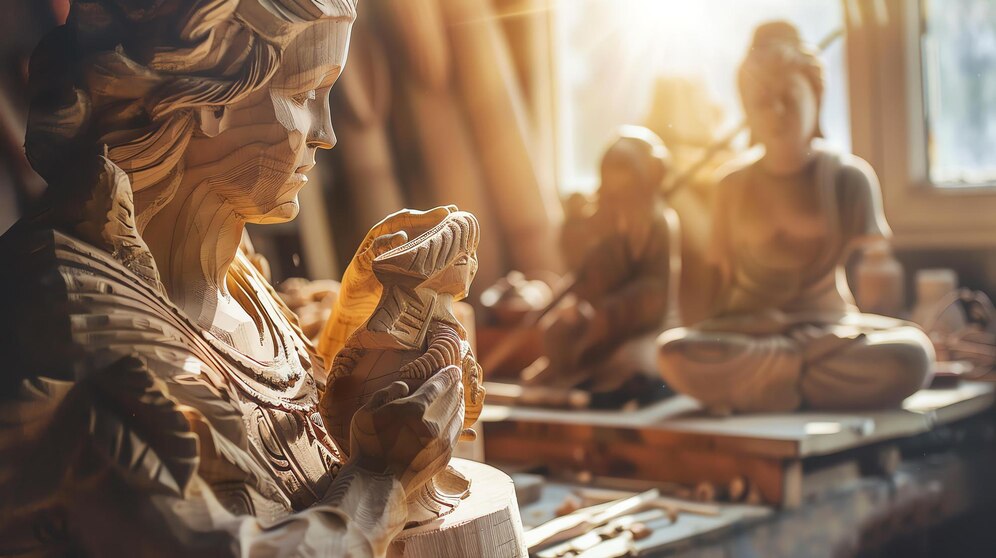Antiquità a term that resonates with history enthusiasts and art connoisseurs alike, encapsulates the essence of ancient artifacts that serve as windows into bygone eras. Derived from the Latin word “antiquus,” meaning old or ancient, antiquità encompasses a vast array of objects and artworks that have withstood the test of time. In this exploration, we delve into the multifaceted world of antiquities, unraveling the stories and significance behind these timeless relics.
The Allure of Antiquities
Antiquities hold a unique charm that transcends time and connects us to the roots of human civilization. These artifacts, whether archaeological finds, sculptures, pottery, or coins, provide a tangible link to the past, offering insights into the lives, beliefs, and cultures of ancient societies. The allure of antiquità lies in its ability to evoke a sense of wonder, transporting us to a different epoch and allowing us to marvel at the craftsmanship and ingenuity of our forebears.
Archaeological Marvels
One of the primary sources of antiquities is archaeological excavations. The careful and systematic uncovering of ancient sites has yielded treasures that narrate tales of ancient civilizations. From the grandeur of Egyptian pyramids to the intricate mosaics of Pompeii, archaeological finds not only contribute to our historical knowledge but also offer a visual feast for those captivated by the artistry of the past.
The Rosetta Stone, an iconic example of an archaeological marvel, played a pivotal role in deciphering ancient Egyptian hieroglyphs. Discovered in 1799 by a French soldier during the Napoleonic campaign in Egypt, the Rosetta Stone became the key to unlocking the mysteries of an ancient language, enabling scholars to unravel the history and literature of a bygone era.
Sculptures and Statuary
Antiquità includes a plethora of sculptures and statuary that showcase the artistic prowess of ancient civilizations. From the timeless beauty of Greek and Roman sculptures to the serene countenances of Buddhist statuary, these artifacts offer a glimpse into the aesthetic sensibilities of diverse cultures.
The Venus de Milo, a celebrated Greek sculpture, stands as a testament to the classical artistry of the Hellenistic period. Discovered on the island of Milos in 1820, this marble masterpiece is renowned for its graceful pose and the ethereal beauty of the goddess it represents. The Venus de Milo exemplifies the enduring appeal of classical sculpture, captivating art enthusiasts and scholars alike.
Pottery and Ceramics
Ancient pottery and ceramics constitute another integral aspect of antiquità. These utilitarian objects not only served practical purposes in daily life but also bore witness to the artistic expressions of ancient cultures. From the exquisite black-figure and red-figure pottery of ancient Greece to the delicate blue-and-white porcelain of Imperial China, each piece tells a story of craftsmanship and cultural identity.
The Terra Cotta Army, discovered in the tomb of China’s first emperor, Qin Shi Huang, is a remarkable example of ancient ceramic art. Crafted over two millennia ago to accompany the emperor in the afterlife, the thousands of life-sized soldiers, horses, and chariots showcase the unparalleled skill of Chinese artisans. This awe-inspiring find not only sheds light on ancient burial practices but also stands as a testament to the importance of art in shaping beliefs and rituals.
Coins and Numismatics
Coins, often overlooked in their ubiquity, play a crucial role in understanding economic systems, political ideologies, and cultural exchanges of the past. Numismatics, the study of coins, allows historians to piece together the puzzle of ancient economies and trace the circulation of currencies across empires and civilizations.
The Lydian Lion, considered one of the earliest coins in existence, hails from the ancient kingdom of Lydia in Asia Minor. Crafted from electrum, a naturally occurring alloy of gold and silver, the Lydian Lion symbolizes the birth of coinage as a medium of exchange. Numismatists delve into the intricate designs and inscriptions on coins to unravel the economic and political landscapes of antiquity.
Challenges in Preserving Antiquities
While antiquities offer invaluable insights into our shared heritage, the preservation of these artifacts poses significant challenges. The clandestine trade of looted antiquities, fueled by illicit excavation and smuggling, threatens the integrity of archaeological sites and robs nations of their cultural treasures. Efforts to combat the illegal trade in antiquities involve international cooperation, stringent laws, and the use of advanced technologies to track and recover stolen artifacts.
In addition to illicit activities, environmental factors and the passage of time contribute to the deterioration of antiquities. Climate change, pollution, and improper storage conditions can lead to the decay of ancient materials, emphasizing the urgency of conservation efforts. Museums, cultural institutions, and governments play a pivotal role in implementing measures to safeguard and preserve these treasures for future generations.
Ethical Considerations in Collecting Antiquities
The ethical dimensions of collecting antiquities have garnered increased attention in recent years. Questions about the rightful ownership of cultural heritage, repatriation of stolen artifacts, and the responsible acquisition of antiquities underscore the need for a thoughtful and ethical approach to collecting. Dialogue between source countries, museums, and private collectors has become essential in addressing the complexities surrounding the provenance and ownership of antiquities.
Conclusion
Antiquità, with its vast tapestry of archaeological wonders, sculptures, pottery, and coins, beckons us to embark on a journey through time. These artifacts serve as tangible links to the past, providing a deeper understanding of the diverse cultures that have shaped our world. As we marvel at the craftsmanship of ancient artisans and unravel the stories embedded in these relics, it becomes apparent that the preservation and ethical appreciation of antiquities are essential for safeguarding our shared human heritage. Through responsible stewardship and a collective commitment to cultural preservation, we can ensure that the allure of antiquità continues to captivate and inspire generations to come.







